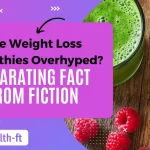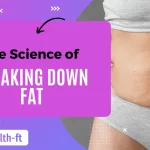Fatty liver disease is characterized by fat accumulation within the liver cells. It can be pretty mild and temporary if the development of the sickness reaches only the first stage. In contrast, if the illness remains undetected, it can lead to complications like inflammation, fibrosis or even cirrhosis. In a sense, the most valuable tool in treating and preventing fatty liver disease is, most likely, the strategic diet. You need to understand how it develops and what causes it, follow a well-structured fatty liver disease diet plan for effective treatment.
What Are The Sample Fatty Liver Disease Diet Plans?
A well-balanced fatty liver disease diet plan is crucial in managing fatty liver disease. Below is a three-day meal plan to support liver health by incorporating nutrient-dense, anti-inflammatory foods.
| Day | Breakfast | Snack 1 | Lunch | Snack 2 | Dinner |
|---|---|---|---|---|---|
| Day 1 | Overnight oats with almond milk, chia seeds, and fresh berries. | Green tea with a handful of almonds. | Grilled chicken salad with mixed greens, avocado, and olive oil dressing. | Sliced apple with almond butter. | Baked salmon with quinoa and steamed broccoli. |
| Day 2 | Smoothie made with spinach, Greek yogurt, banana, and flaxseeds. | Carrot sticks with hummus. | Lentil soup with whole-grain bread. | A small handful of walnuts. | Grilled turkey breast with sweet potato mash and sautéed kale. |
| Day 3 | Scrambled eggs with spinach and whole-grain toast. | Low-fat yogurt with a drizzle of honey. | Grilled tofu stir-fry with brown rice and mixed vegetables. | Cucumber slices with guacamole. | Grilled mackerel with roasted Brussels sprouts and wild rice. |
What Is the Understanding of Fatty Liver Disease?
Fatty liver disease is divided into two primary types:
Alcoholic Fatty Liver Disease (AFLD):
Caused due to excessive consumption of alcohol.
Alcohol influences the ability of the liver to metabolize fats and ends up depositing fats.
Non-Alcoholic Fatty Liver Disease (NAFLD):
It is most prevalent and it is linked with obesity, insulin resistance and high cholesterol.
Subtypes include:
- Simple Fatty Liver (Steatosis): The fatty deposits characteristic of this condition should not always indicate severely damaged cells but could also be purely benign excess fat.
- Non-Alcoholic Steatohepatitis (NASH): Fatty deposition together with inflammation and liver injury.
Both types can advance to more serious stages of liver disease. However, they are typically not untreatable and could be reversed if appropriately managed.
What Are The Causes and Risk Factors of Fatty Liver Disease?
Understanding the causes and risk factors can help tailor an effective and healthy dietary and lifestyle plan.
- Obesity: The major cause of fatty liver is obesity, among other causes.
- Insulin Resistance: It is common in people with type 2 diabetes or prediabetes, leading to fatty liver deposition.
- High Sugar Intake: Drinks and food with high sugar lead to this disease.
- High Cholesterol and Triglycerides: Hyperlipidaemia makes the deposition of liver fat volume worse.
- Sedentary Lifestyle: Inactivity aids in the gain of weight and develops metabolic problems at the same time.
- Genetics: Family history would make a person more prone to the risk.
Fatty liver disease is influenced by multiple factors, including obesity, insulin resistance, and high cholesterol. According to the American Liver Foundation, lifestyle modifications, including diet and exercise, are crucial in preventing disease progression.
Why is Diet Critical for Fatty Liver Disease?
The liver is the largest internal organ functioning in the body, it is involved in processing nutrients, detoxification and controlling fat deposition. A healthy fatty liver disease diet plan can:
- Reduce liver fat levels.
- Improve insulin sensitivity.
- Decrease inflammation.
Thus, the goal of the management is to slow down the advancement of liver disease to its severe form.
What Principles of a Fatty Liver Disease Diet?
Following the best diet plan for fatty liver disease involves making strategic food choices that support liver function, reduce fat accumulation, and minimize inflammation.
Calorie Balance
It’s best to lose 1-2 pounds of weight per week. Losing weight quickly might exacerbate liver disease.
Increase physical activity and restrict food intake to create a calorie deficit.
Anti-Inflammatory Foods
One should take rich in antioxidants and anti-inflammatory substances to minimize the pressure on the liver.
Low-Glycemic Index (GI) Foods
Choose foods that tend to help stabilize your glucose levels or use low glycemic foods like whole-grain products and vegetables.
Healthy Fats
The advice is to replace the dangerous saturated and trans fats with unsaturated fats, including omega-3 fatty acids.
Lean Proteins
High-protein foods such as fish, chicken, legumes, and tofu should be selected for muscle and liver repair.
Hydration
Take lots of water for the body as this aids in the liver-cleansing process and subsists the liver.
Foods to Include in a Fatty Liver Diet
Vegetables
Examples: Leafy vegetables including broccoli, spinach, kale, cauliflower, and Brussels sprouts.
Why? Rich in vitamins, antioxidants, and fibre. Specifically, cruciferous foods aid in liver detoxification.
Fruits
Choose low-sugar options like berries, apples, and citrus fruits.
Why? They contain nutrients per serving, antioxidant activity and fiber to counteract oxidation in the liver.
Whole Grains
Examples: Oats, quinoa, brown rice, barley.
Why? Cognitively and metabolically fuel a constant and unyielding power source and enhance the receptor affinity of insulin in the body.
Healthy Fats
Sources: Monounsaturated fatty acids – Olive oil, Avocado, Nuts and Seeds and Fatty fishes – Salmon and Mackerel.
Why? Bettering the inflammation levels and liver fat contents have been attributed to omega-3 fatty acids.
Lean Proteins
Examples: Chicken without skin, turkey, eggs, beans, tofu.
Why? Nourish muscle tissues and make the liver regenerate much faster.
Green Tea
Why? Has got rich catechins that can potentially assist in controlling the liver’s fat accumulation.
Spices and Herbs
Examples: Curcumin, garlic and ginger.
Why? These are anti-inflammatory and positively affect the liver.
Probiotic Foods
Examples: Yogurt, kefir, sauerkraut, kimchi.
Why? Promote gut and liver health.
What Foods to Avoid in a Fatty Liver Disease Diet Plan?
When following a fatty liver disease diet plan, avoiding foods that contribute to fat accumulation, inflammation, and liver damage is essential.
Sugary Foods and Drinks
Examples: Sodas, candies, desserts.
Why? Sugar also tends to make thin people get fat because it makes the body’s cells resistant to insulin and causes fat deposits.
Alcohol
Why? It can also cause liver diseases, which is evident in AFLD when taken in small portions.
Refined Carbohydrates
Examples: candies, soft drinks, desserts, white rice, cakes, biscuits, pastry products, doughnuts and sweet foods products.
Why? Increased blood sugar levels help in fat accumulation.
Saturated and Trans Fats
Examples: Chips or crisps, fries or chips, cake or cookies, and margarine.
Why? Increased inflammation and liver fat content.
Excess Sodium
Examples: Sausages, canned vegetables and fruits, and chips.
Why? Effects include increasing water retention and adding pressure to the liver as well.
What Are The Lifestyle Tips for Enhancing the Fatty Liver Disease Diet Plan?
Combining the best fatty liver disease diet plan with healthy lifestyle habits can significantly improve liver function and overall well-being.
Exercise Regularly
- Engage in walk and ride activities followed by strength training activities.
- The goal is to achieve at least 150 minutes of moderate intensity exercise each week.
Manage Stress
Stress should be reduced through mindfulness, meditation or practicing yoga.
Stay Hydrated
Also, to support detoxification, you must take about 8-10 glasses of water daily.
Sleep Well
Aiming to get 7-8 hours of good, sound sleep to be healthy is essential.
Monitor Progress
A diet diary can also document any changes in behaviour and symptoms.
What Are The Benefits of Following a Fatty Liver Diet?
Following a well-balanced diet supports liver function and overall health while preventing disease.
Reduces Liver Fat
A balanced diet is invasive with a view to decreasing as well as preventing the build-up of triglycerides as well as processing fat.
Improves Insulin Sensitivity
It helps regulate blood sugar and familiar adipose tissue.
Prevents Disease Progression
Anti-inflammatory foods prevent liver damage and promote healing.
Enhances Energy Levels
Complex, natural foods supply energy and strength in the course of the day.
Promotes Weight Loss
Slow, steady weight loss that is achieved through changes made to one’s diet is effective in reversing the condition.
What Are The Challenges and Solutions for Fatty Liver Disease Diet Plan?
Overcoming dietary challenges is essential for managing fatty liver disease and maintaining long-term health.
Difficulty Avoiding Cravings
Solution: Plan nutritious meals and do not allow access to junk and calorie-laden foods.
Navigating Social Events
Solution: Take care about what you eat and do not drink alcohol.
Keeping Motivation
Solution: Do not aim for a large goal because it might be difficult to achieve it, and consider doing a smaller goal and logging the results.
Conclusion
Therefore, a non-alcoholic fatty liver disease diet plan may be well managed by strictly adopting correct diets and healthy lifestyles. Dietary changes are key to preventing the worsening of the liver condition and movable fevers; a diet inclusive of all macronutrients and micronutrients is important for the liver. A healthy diet with lots of whole foods, lean proteins, and good fat also ensures that regular exercise will help reverse the damage done to the liver in time.
If you are concerned you have developed fatty liver disease or have been diagnosed, you should seek medical advice from a doctor or registered dietitian to form a specialised diet plan with your requirements in mind. This shows that ultimate steps can be made today for a healthier future.




